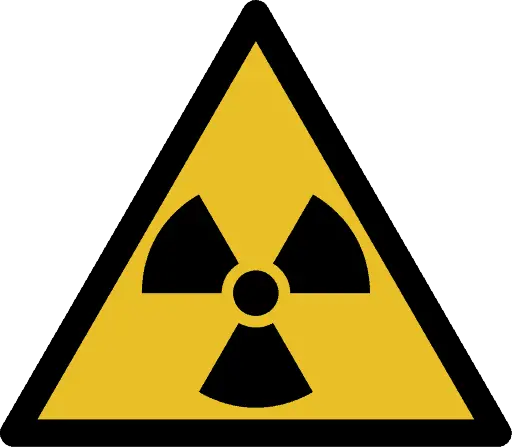
A contaminant is generally referred to as an unwanted constituent, harmful substance or impurity in a location (material, physical body, natural environment, workplace) where it is not intended or desired to be. Contaminants have much more general meaning, since is can be defined in disciplines such as chemistry, environmental protection, radiation protection or agriculture.
Radioactive contamination is referred to as the presence of an unwanted radioactive substances on surfaces, or within solids (including the human body), liquids or gases, where their presence is unintended or undesirable. Radioactive contamination consist of radioactive atoms (material) that have escaped the system or structure that would normally contain them. Since radioactive contamination is radioactive material, ionizing radiation is emitted by the contamination. It is very important, which material (which radioisotope) is the radioactive contaminant. It is also very important to distinguish between radioactive contamination and radiation itself.
Radiactive Contaminants
Radioactive contamination consist of radioactive material, that generate ionizing radiation. It is the source of radiation, not radiation itself. Anytime that radioactive material is not in a sealed radioactive source container and might be spread onto other objects, radioactive contamination is a possibility. Radioactive contamination may be characterized by following points:
- Radioactive contamination consist of radioactive material (contaminants), that may be solid, liquid or gaseous. Large contaminants can be even visible, but you cannot see radiation produced.
- When released, contaminants can be spread by air, water or just by mechanical contact.
- We cannot shield contamination.
- We can mitigate contamination by protecting integrity of barriers (source container, fuel cladding, reactor vessel, containment building)
- Since contaminants interact chemically, they may be contained within objects such as the human body.
- We can rid of contamination by many mechanical, chemical (decontaminate surfaces), or biological processes (biological half-life).
- It is of the highest importance, which material is the radioactive contaminant (half-life, mode of decay, energy).
We hope, this article, Contaminant – Contamination, helps you. If so, give us a like in the sidebar. Main purpose of this website is to help the public to learn some interesting and important information about radiation and dosimeters.